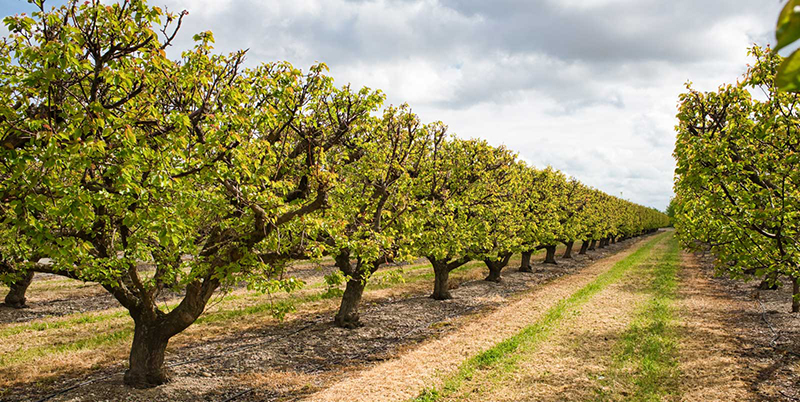
Several climatic factors effect pollination
- Temperature below 55-60° F reduces bee activity
- Temperature above 85-90° F dries stigmatic surface and pollen grain doesn’t germinate
- Windy weather slows bee activity
- Rain during anthesis (time stigmatic surface is receptive)
- Presence of other flowers — the fruit plants generally are poor nectar producers and bees will naturally seek out the best nectar producing flowers
- Most insecticides will reduce bee activity — therefore do not spray them during bloom
Pollination requirements for several crops
Those fruits listed as self-fertile will set fruit with their own pollen.
Apple: Cross pollination always needed to produce adequate fruit crop.
Apricot: All varieties are self-fruitful but cross pollination is helpful.
Cherry: (1) Sweet–most varieties are self-unfruitful. However there are newer varieties that are self fruitful such as Lappins, Stella, Whitegold, Sweetheart and Blackgold. (2) Red tart – the commercial varieties are self-fruitful.
Nectarine: Most varieties are self-fruitful; however, those having J. H. Hale in the parentage will require cross pollination.
Pear: A few varieties are self-fruitful. But a pollinizer will improve crop.
Plum: A wide diversity occurs in the plums. About half of the varieties are self-fruitful and half are not. To be on the safe side pollinizers should be provided.
Almond: Must be cross pollinated by another variety.
Black Walnut: Self-fertile but often the pollen is not shed when stigma is receptive. Use at least two varieties or seedlings to assure good crops.
Carpathian Walnut: Self-unfruitful – at least one other seedling tree required to assure a crop.
English Walnut: See Carpathian Walnut.
Persian Walnut: See Carpathian Walnut.
Pistachio: Must be cross pollinated.
